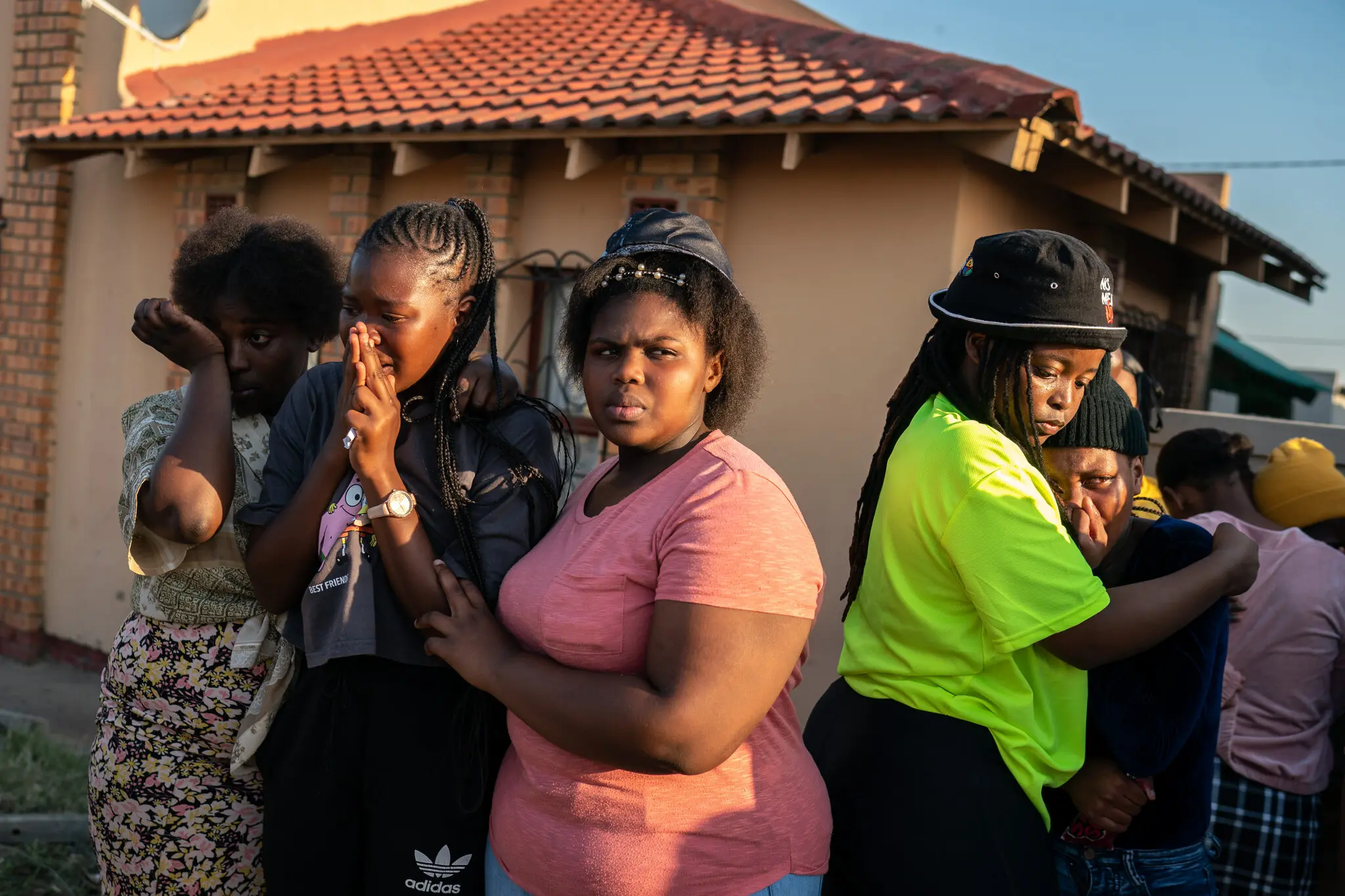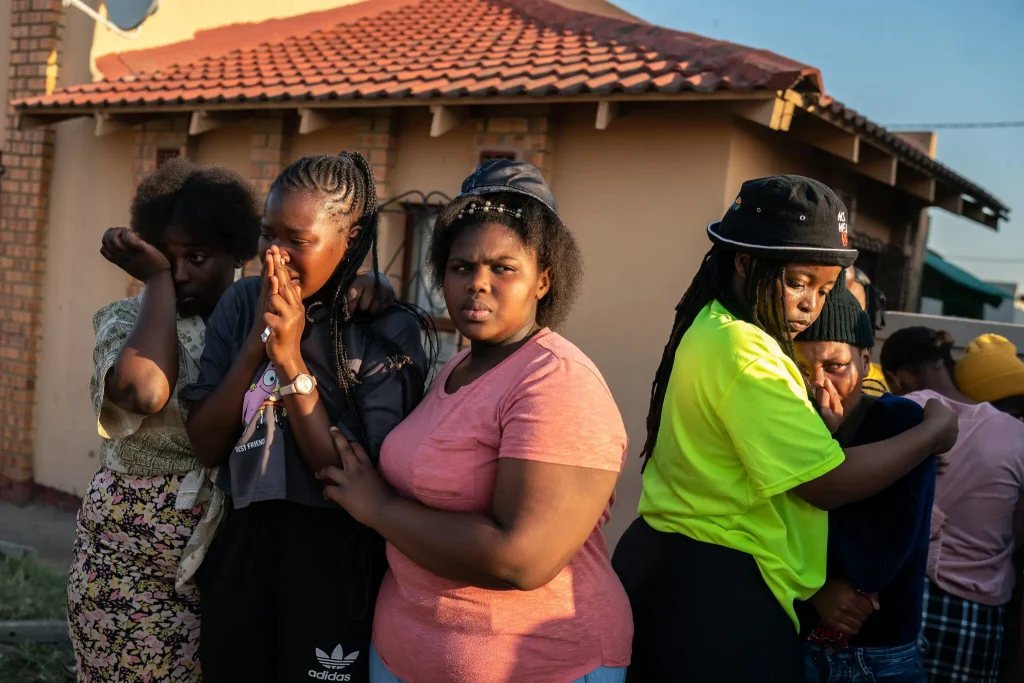
Health officials met with families that had waited more than two months to learn why 21 teenagers died one June night in an overcrowded bar.
Report says

JOHANNESBURG — The 21 South African teenagers who collapsed in a crowded tavern during a night of revelry in June died of asphyxiation, two local TV news channels reported, citing victims’ families who met with health officials on Thursday.
The explanation by officials from the Eastern Cape Province’s health department to the families of 18 victims raised more questions and left some relatives frustrated and irate. Several told the news channels that they did not believe the information.
The health department has not released the cause of death publicly, and it was not clear how the teenagers were asphyxiated. But parents told reporters that the authorities had suggested overcrowding led to their children’s death.
When officials met with the families, they read the results of a toxicology report to each family in a separate meeting but did not hand over the document, said Siyanda Manana, a spokesman for the provincial health department.
“It’s not our mandate to give them the report,” Mr. Manana said. Parents who want the document will have to file a request for access to the records, he added.
Instead, the report was given to the police for further investigation, and detectives will work with prosecutors to investigate a possible criminal case, said Brig. Tembinkosi Kinana, a spokesman for the police.
Parents and survivors had waited for more than two months to learn exactly how a night at Enyobeni Tavern turned into a national tragedy.
The teenagers, ages 14 to 18, collapsed on the floor, tables and couches in the crowded tavern in Scenery Park, a working-class township in the city of East London, on the country’s southeastern coast.
Survivors recalled that a mysterious gas had filled the room and that a crush of people had rushed toward the single stairway and door to try to escape.
But the South African authorities earlier ruled out the stampede as the cause of death.
The deaths sparked a national conversation on underage drinking. At a mass funeral for the teenagers, President Cyril Ramaphosa suggested that the legal drinking age be raised to 21 from 18.
In July, a health department official, Dr. Litha Matiwane, said that traces of methanol had been found in all 21 bodies, but that the results were inconclusive. While traces of carbon monoxide were also found in the autopsy samples, they were not at lethal levels, Dr. Matiwane said.
The health department has cited its lawyers and some parents for not releasing the cause of death publicly. “Parents said we cannot talk about the death of their children in public,” Mr. Manana said.
Still, several parents have spoken to the news media.
One told the South African Broadcasting Corporation that she planned to seek legal advice to force the health department to hand over the report.
Another parent, Sidwenn Rangile, told The New York Times that officials had promised him a meeting in his home to explain how his 17-year-old son, Mbulelo Rangile, had died in the tavern. But he said he had not heard anything from the health department.
Editors’ Picks

The tavern’s owner and two employees were arrested in July, appearing briefly in court on charges related to selling alcohol to people younger than 18. The case has since been postponed.
Prosecutors are awaiting the toxicology report and the results of a police investigation before adding more charges, said Luxolo Tyali, a spokesman for the prosecutor’s office.
Establishments like Enyobeni Tavern have mushroomed in South Africa’s townships and have often skirted regulations. Residents who share a wall with the two-story tavern say that parties often lasted until the early hours of the morning, with young patrons frequenting the bar.
Community members said they had complained to the authorities, but the provincial liquor board said it had recorded no formal complaints until the June tragedy.
The Eastern Cape Liquor Board said it had 1,150 active liquor licenses, but just one inspector to oversee them.
In South Africa’s formerly segregated townships, there are few recreational alternatives. Teenagers in Scenery Park and the surrounding townships said in interviews that they had few options for diversions beyond poorly maintained fields and neglected, unsafe playgrounds.

Zipo-zenkosi Ncokazi contributed reporting from Mthatha, South Africa.
